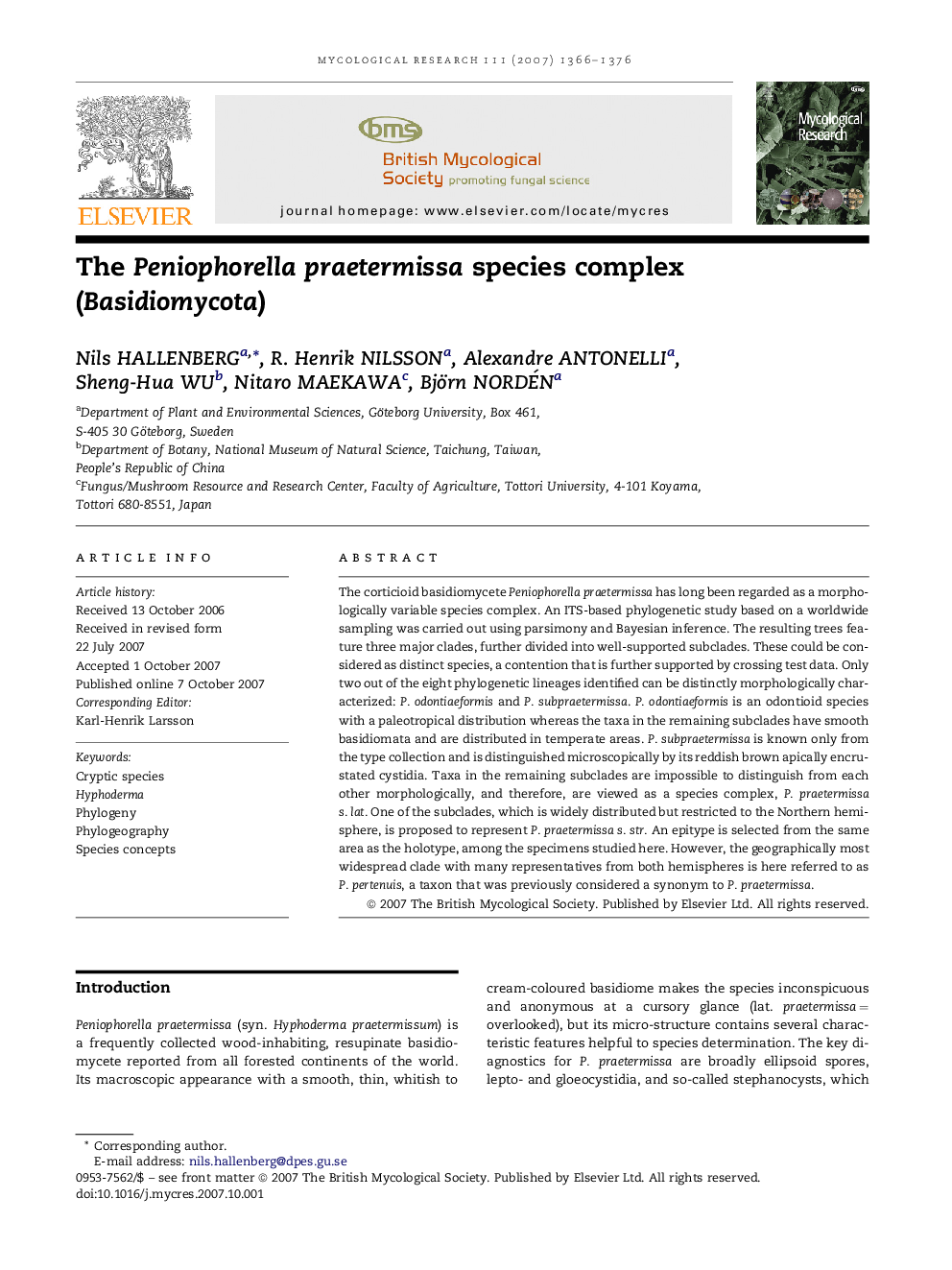| Article ID | Journal | Published Year | Pages | File Type |
|---|---|---|---|---|
| 4357856 | Mycological Research | 2007 | 11 Pages |
The corticioid basidiomycete Peniophorella praetermissa has long been regarded as a morphologically variable species complex. An ITS-based phylogenetic study based on a worldwide sampling was carried out using parsimony and Bayesian inference. The resulting trees feature three major clades, further divided into well-supported subclades. These could be considered as distinct species, a contention that is further supported by crossing test data. Only two out of the eight phylogenetic lineages identified can be distinctly morphologically characterized: P. odontiaeformis and P. subpraetermissa. P. odontiaeformis is an odontioid species with a paleotropical distribution whereas the taxa in the remaining subclades have smooth basidiomata and are distributed in temperate areas. P. subpraetermissa is known only from the type collection and is distinguished microscopically by its reddish brown apically encrustated cystidia. Taxa in the remaining subclades are impossible to distinguish from each other morphologically, and therefore, are viewed as a species complex, P. praetermissa s. lat. One of the subclades, which is widely distributed but restricted to the Northern hemisphere, is proposed to represent P. praetermissa s. str. An epitype is selected from the same area as the holotype, among the specimens studied here. However, the geographically most widespread clade with many representatives from both hemispheres is here referred to as P. pertenuis, a taxon that was previously considered a synonym to P. praetermissa.
